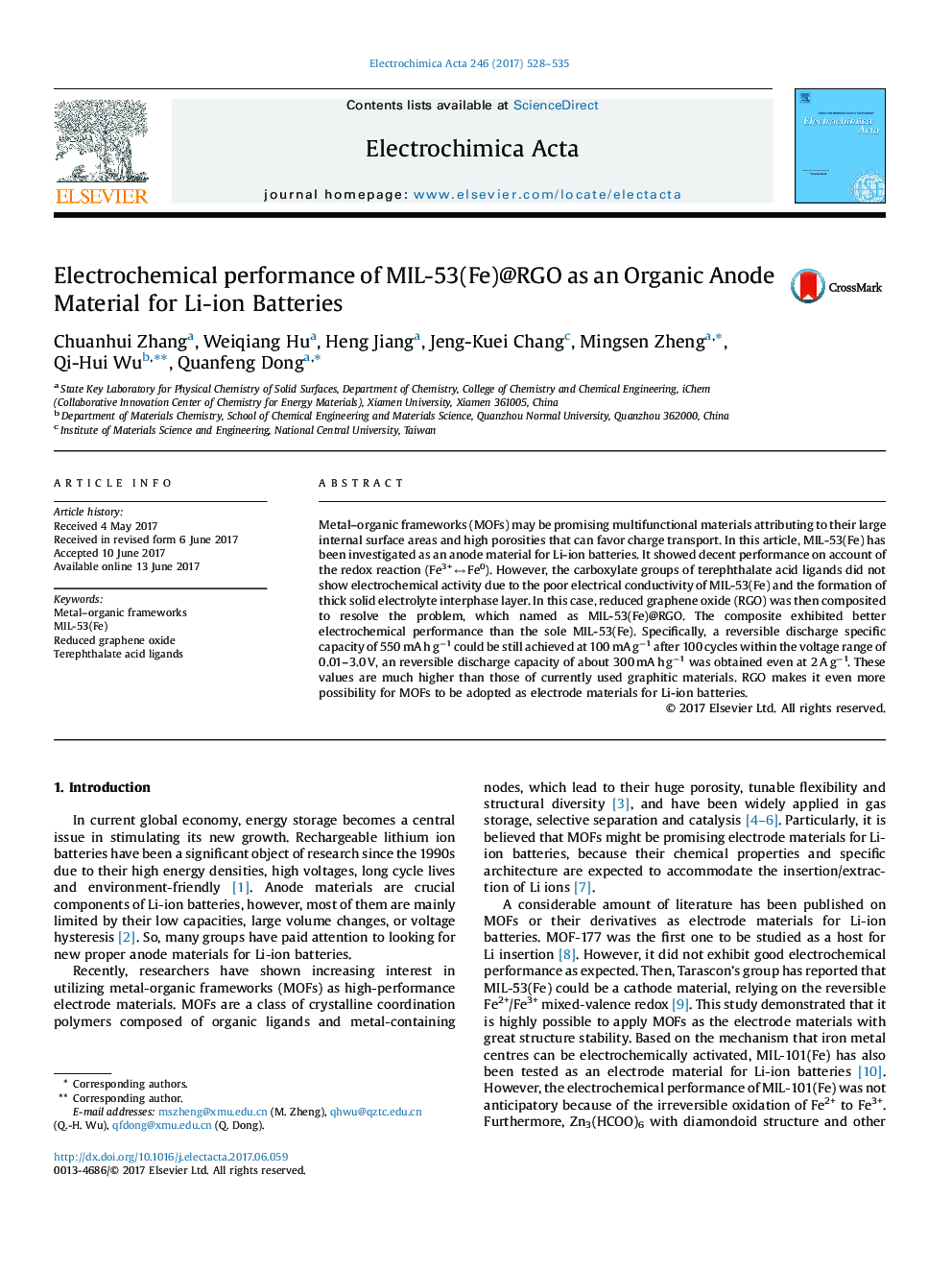| Article ID | Journal | Published Year | Pages | File Type |
|---|---|---|---|---|
| 6470528 | Electrochimica Acta | 2017 | 8 Pages |
Metal-organic frameworks (MOFs) may be promising multifunctional materials attributing to their large internal surface areas and high porosities that can favor charge transport. In this article, MIL-53(Fe) has been investigated as an anode material for Li-ion batteries. It showed decent performance on account of the redox reaction (Fe3+ â Fe0). However, the carboxylate groups of terephthalate acid ligands did not show electrochemical activity due to the poor electrical conductivity of MIL-53(Fe) and the formation of thick solid electrolyte interphase layer. In this case, reduced graphene oxide (RGO) was then composited to resolve the problem, which named as MIL-53(Fe)@RGO. The composite exhibited better electrochemical performance than the sole MIL-53(Fe). Specifically, a reversible discharge specific capacity of 550 mA h gâ1 could be still achieved at 100 mA gâ1 after 100 cycles within the voltage range of 0.01-3.0 V, an reversible discharge capacity of about 300 mA h gâ1 was obtained even at 2 A gâ1. These values are much higher than those of currently used graphitic materials. RGO makes it even more possibility for MOFs to be adopted as electrode materials for Li-ion batteries.
